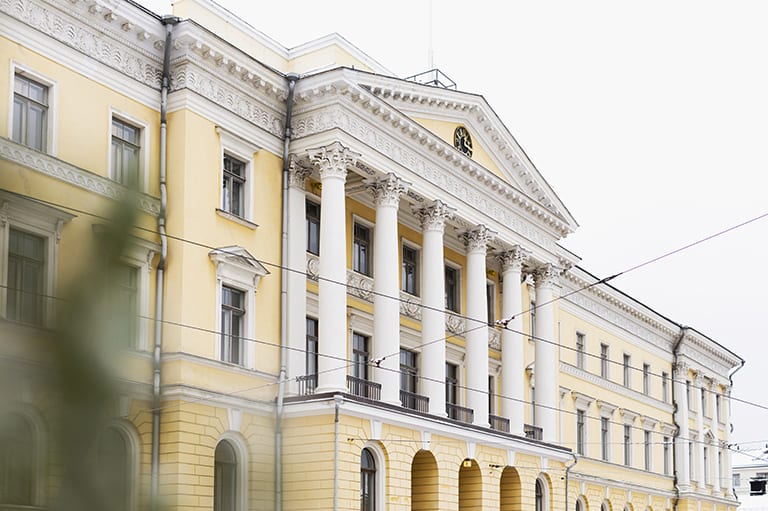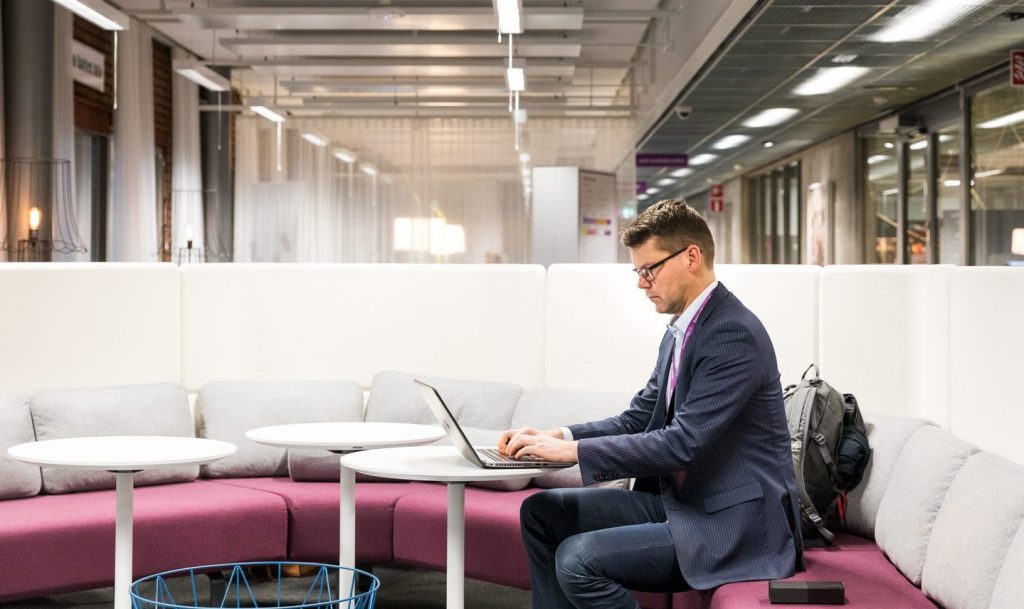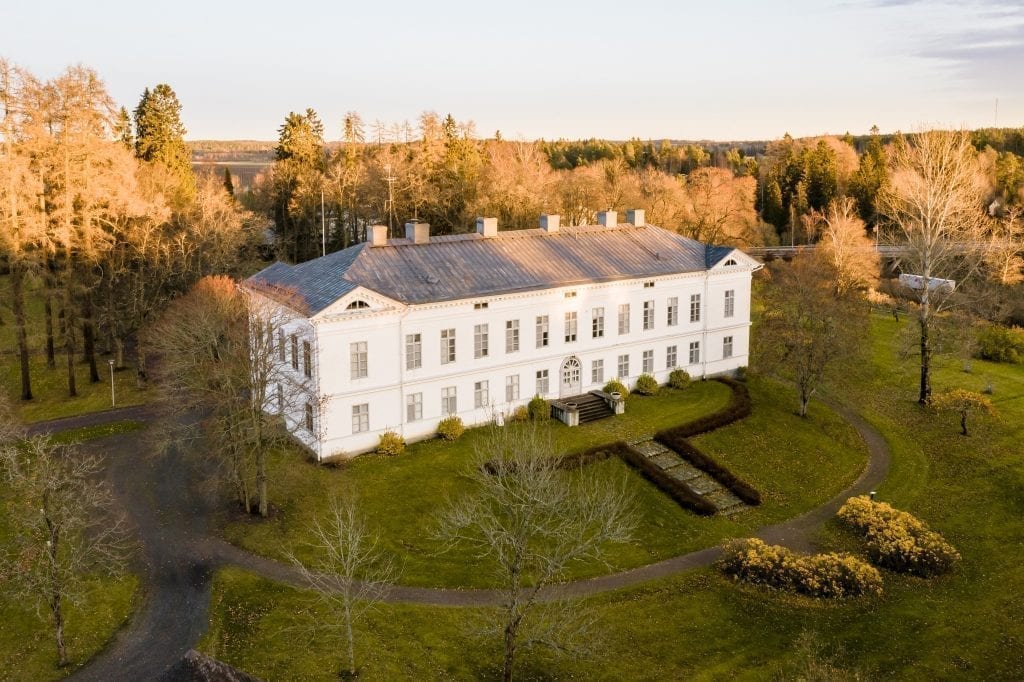
How we work
This page provides a summary of answers to frequently asked questions about the management and administration of state-owned properties. The page is intended for everyone interested in the management of €4.8 billion of national wealth.
How are state-owned real estate assets managed?
The state owns almost 9,000 buildings, which have a total of 5.9 million square metres of facilities. The portfolio includes 600 protected buildings as well as police buildings and law courts, prisons, laboratories, museums, ministries and government agency offices as well as Finnish Defence Forces’ premises.
State-owned real estate is managed by Senate Group, which acts under the guidance and direction of the Ministry of Finance. Senate Group comprises Senate Properties, which is the parent unincorporated state enterprise, and Defence Properties Finland, which is a subsidiary unincorporated state enterprise. The Ministry of Defence guides and directs Defence Properties Finland in the production of services for the Finnish Defence Forces and partners specified by the Defence Forces. Senate Group’s operations are guided by the Government Premises Strategy and the Government Real Estate Strategy.
Senate Group develops and maintains state-owned built real estate assets. Senate Properties does not make a profit but provides well-functioning, secure facilities using a gross rent model to support central government activities and the work of the personnel in all circumstances.
The management and administration of state-owned property have changed much over the past ten years. A centralised system has been found to work and resulted in savings in facilities costs while the property stock is in better condition than ever.
Senate Properties is currently the hub of the government’s leasing system, which is based on the gross rent model. Clients pay Senate Properties rent, which covers property investments and other costs. Senate Properties makes no profit on leasing facilities.
The aims of the gross rent model leasing system are efficient, appropriate use of facilities and arranging the maintenance and upkeep of the properties to ensure the buildings remain in good condition.
Senate Properties has reached the goals it set to curb costs. In 2015, the government’s facilities costs were around €800 million and remained at roughly the same level during 2015–2022. Current facilities costs are around €776 million. Total savings of €600 million have been generated.
Over the same period, Senate Properties has invested €2 billion in new facilities and spent €700 million on property maintenance. Senate Properties has sold unneeded properties for more than €1 billion and in the next few years will invest an estimated €600-€700 million a year in central government facilities.
Most of the investments will be allocated to facilities for the security agencies including the Finnish Defence Forces, Police, Finnish Security and Intelligence Service, Border Guard and prisons. The investment programme also includes projects to improve the preparedness of premises such as the provision of power backup solutions. The investment problem implemented will inevitably increase facilities costs. The rents of Senate Properties’ clients are additionally index linked.
We can take excellent care of our common property without squandering public resources. Centralised, professional real estate management means better working spaces, better services for citizens and savings for central government. State-owned premises are currently in good condition and functionally better than ever.
In 2022, Senate Group invested almost €500 million in the premises of its clients. Typically around 2/3 of the projects are renovation projects and 1/3 newbuild. We currently (2023) have more than 500 construction projects in various stages of preparation or implementation, with more than 200 in the construction stage. Investment projects in the construction stage have a value of more than €750 million.
Most of the newbuild projects involve high-security construction for the Police, the Prison and Probation Service of Finland, which is responsible for prisons, and the Finnish Defence Forces, which imposes its own criteria for the materials used and requires security clearance for everyone at the construction site.
Senate Properties implements the investments and the client agencies pay for the premises on a gross rent basis, which covers the investment costs, property maintenance costs and renovation to maintain the standard of the property. Newbuild and modernisation, which increases the standard of the property, typically result in a rise in the rent level. The client must have allocated sufficient appropriations for the rising costs of the facilities before the project begins.
Most Senate Group’s construction projects are completed in accordance with the project budget. For example, the costs of projects completed based on investment decisions made in 2018-2022, were overall actually lower than budgeted.
Construction projects are managed and followed in accordance with cost targets and where necessary, we negotiate solutions with the client agency to enable implementation of the project within the planned budget.
In individual cases, the costs of a project can increase in the middle of the project, which is usually due to an expansion of the project content or a change in the client’s needs. Estimating costs is challenging when historically important properties are involved since any defective structural solutions often don’t come to light until dismantling work. During the past year, high inflation in building material and energy costs has put upward pressure on projects begun and invoiced before the invasion of Ukraine.
Senate Group also aims to reduce emissions originating in construction and is the first in Finland to set clear emissions targets. The aim is for a reduction in emissions of 25% in all newbuild projects of more than €2 million and a reduction of 15% in repair projects compared with conventional construction.
Particularly in newbuild, wood construction is basically studied as one solution that reduces carbon footprint. In security projects, however, wood construction is generally not an acceptable alternative.
We need to take excellent care of our shared property. This requires dedicated professional skills to implement complex and demanding projects.
A particular challenge for the Police is that most of the premises currently used were built in the 1960s-1980s and have reached the end of their technical life. Besides the need for renovation, the premises also need updating to enable them to also functionally meet the needs of the Police today.
The rent level in the old premises leased by the Police has typically been very low. When a new, modern, high-security building is built, under the gross rent model, the rent is significantly higher than for the old premises. For the investment to go ahead, the Police need appropriations for the rent of the premises.
Senate Properties works closely with the Police and together with the National Police Board has drawn up a roadmap of prioritised premises projects. There are plans to implement a total of 38 police projects before 2027. Calculations indicate that the implementation of these projects means investments of around €420 million. This would mean pressure to increase Police funding in the Budget by around €22.2 million.
During the term of lease, Senate Properties will be responsible for the maintenance repairs and renovation of Police premises to maintain the standard of the properties. Renovation does not fundamentally change the standard of the building and thus does not affect the rent charged to the client.
The condition of the premises is regularly monitored. In the event of any indoor air quality issues, we act in accordance with the zero-tolerance policies developed by Senate Properties. Experts promptly study suspected and identified issues, and remedial measures are agreed.
It is important for the Police to have up-to-date, healthy, secure and appropriate premises. The old buildings no longer meet the practical requirements of the Police in terms of the need for space, security or other technical criteria, for example. This leads to newbuild projects in the implementation of Police buildings and this will not be possible without an adequate increase in police operating expenses.
Good, safe working conditions require long-term care of buildings throughout their lifecycle. This requires the right skills, regular monitoring of the condition of the buildings and ensuring their maintenance and upkeep. Encouraged by positive results, Senate Group wants to continue the purposeful development of its operations. In the real estate and construction sector, Senate Group is recognised as a leader in indoor air quality matters.
Above all, we invest in proactive measures to entirely avoid indoor air quality problems. This is based on knowing the condition and repair needs of the buildings and on taking the required action.
Senate Group tackles problems arising promptly and with a response time of one day. Less than 2% of the buildings for which we are responsible are subject to reactive indoor air quality measures.
Whereas property maintenance measures can resolve most indoor air quality problems, sometimes repair measures are needed.
In 2019-2022, Senate Properties has additionally invested a total of €250 million in improving indoor conditions.
Senate Properties’ indoor air quality operations comprise three concepts:
1) quality assurance during construction as well as building upkeep and maintenance
2) continuous development of own indoor air expertise and extensive cooperation
3) proactive detection, prompt reaction and repair supervision and monitoring.
More than 600 buildings in daily use by employees are subject to building inspection. The condition of the structures and ventilation operation is regularly monitored. The aim is that more than 90% of clients’ employees work in inspected premises. In addition, Senate Properties has carried out radon measurements in more than 300 buildings. Radon is a particular indoor air quality problem in Finland.
There are currently a total of 15 effective development projects under way. Everyday activities including rewarding cleaners for indoor air quality observations as well as rapid action teams comprising Senate Properties’ indoor air experts and a specially trained detection dog team. Client satisfaction with indoor air quality and Senate Properties’ approach to dealing with indoor air matters has improved since 2015.
Preparedness and contingency planning have become increasingly important in the light of recent events. Premises and facilities services have an important role in maintaining critical functions in the event of a state of emergency. This is where Senate Properties acts as its clients’ partner.
If needed, Senate Properties makes more detailed contingency agreements with its clients. These agreements agree how the contingency plan will be implemented in practice, what the roles and responsibilities of the client and Senate Properties are, and what expenses the client will incur as a result of the contingency plan. The contingency plan aims to secure critical functions of society.
Preparedness and contingency matters could mean civil defence shelters and emergency escape routes for agencies and Senate Properties is responsible for these. Other special arrangements for a state of emergency include temporary facilities, technical arrangements such as backup power and the availability of services are agreed separately with the client agency concerned.
Senate Properties has around 200 different concrete contingency measures underway. Tasks involve ensuring our own operations as well as developing the operations of service partners and the availability of materials and services in a state of emergency.
Defence Properties Finland, which is responsible for Defence Administration property and part of Senate Group, is in a class of its own. Defence Properties Finland is tasked with ensuring the availability, reliability and continuity of critical Defence Forces’ properties in all security situations.
We primarily pursue carbon neutrality and freedom from fossil fuels by 2035 through our own actions without carbon offsetting. To date, we have already successfully achieved significant emissions reductions by among other things more efficient use of facilities, switching over to using fossil-free energy and by improving the energy efficiency of our properties. The measures we have taken in the properties we manage have delivered in a 90% reduction in emissions since 2012. Regarding use of the properties, it will be possible to reach carbon neutrality already in the 2020s.
Senate Properties is also investing in putting in place photovoltaic power systems in central government properties. In 2022, solar power systems generated more than 1 GWh of electricity, which corresponds to the annual energy consumption of 50 single family-houses.
Senate Properties was the first in Finland to set numerical emissions reductions targets for construction projects. In terms of construction and repair, the goal is a reduction of 25% and 15% in the carbon footprint compared to conventional construction. We are committed to the national green deal agreement for zero-emission construction sites, and circular economy goals are factored into construction projects. Going forward, Senate Properties intends to increase investments in renewable energy and to increase the carbon sequestration capacity and the biodiversity of the areas we manage. This will take place through simple measures such as by meadowing grass areas and afforestation.
Because of the challenging winter energy situation, in autumn 2022 Senate Group launched an extensive Energy Saving Programme in state-owned properties. The programme aims to cut energy consumption by between 50,000 MWh and 75,000 MWh, which is equivalent to the annual energy consumption of almost 10,000 one-bedroom flats. The savings in energy costs will be as high as €10 million.
The most important and most effective way to reduce energy use is to divest premises that are no longer needed. In line with the Government Premises Strategy, Senate Properties promotes the orderly disposal of unnecessary office premises and the transition to working in central government’s shared work environments. Phasing out empty premises means we generate savings, reduce emissions and increase the flexible use of facilities.
Emissions from the built environment account for around 30% of Finland’s emissions. Most, 76% of the emissions from the built environment, originate from energy consumption, heating and electricity during use. Senate Properties has been and will continue to be a leader in reducing the carbon footprint of operations.
The corona pandemic and the opportunities created by digitalisation have speeded up the transition to hybrid and multi-location working, and resulted in a low occupation rate of office premises.
Going forward, public administration will increasingly work in shared working environments. Shared use of premises increases flexibility in the use of facilities, delivers savings, reduces emissions and also promotes reaching Finland’s carbon neutrality goal. The Government Premises Strategy is based on increasingly more efficient and sustainable use of state-owned premises by 2030. Under the Government Real Estate Strategy, properties no longer needed by central government are sold and the capital tied up in them can be directed to the central government’s other needs.
Before selling state-owned property, the possibility to enhance the value of the property is determined and the value of the asset is developed whenever possible. Properties that have no development potential from the value appreciation aspect are sold directly to new owners. Properties for development are developed in partnership with municipalities and cities, and are sold after the appreciation in value obtained by local plan development. Properties for development are developed only in a risk-free way. In practice, this means the local plan development of real estate assets. The rule of thumb is that Senate Properties cannot make major investments in properties which are intended to be leased and/or sold to a private entity.
- Properties are sold at fair value based on bids.
- Direct sales are possible only to municipalities and cities in special cases, and then, too, transactions are at fair value.
- During the selling process, Senate Properties ascertains the background, nationality, financing due diligence and financial capacity of the potential buyer.
All the properties coming up for sale are announced publicly. Sales proceeds are transferred to the government and an estimated €35 million in proceeds were transferred in 2022.
The highest bid does not always win. This might particularly be the case with protected important culture-historical buildings. Senate Properties wants to ensure that the potential owner really does have the resources, ability and knowhow to maintain an important building.
Senate Properties CEO decides on all property transactions up to €0.5 million and the Board of Directors decides on all property transactions up to €10 million. After this, authorisation is vested in the Finnish government and parliament decides transactions more than €30 million.
Senate Properties’ Facility Data Service unit has been the municipalities’ partner in collecting the data. The municipalities can continue to develop their everyday space management and strategic facility management.
At the same time, up-to-date information about the municipalities’ property costs and risks completes the overall picture of general government finances. In recent years, Senate Properties has helped central government to achieve significant savings. The municipalities have the potential to achieve similar savings in their own facilities costs.
Facility data was earlier decentralised in the municipalities. There has not necessarily been a view of the building stock of individual municipalities, its management and use. This is why it has not earlier been possible to form an accurate municipality-specific or national situational picture of the full extent of the facilities used by the municipalities.
The facility data has been compared and digitalised to improve the situation. Senate Properties’ Municipalities’ Facility Data Service unit acts as the municipalities’ partner. Up-to-date, user-friendly facility data both supports municipal decision-making and improves the possibilities to assess the development prospects and risks of overall municipal finances and those of individual municipalities.
This is important not just in planning general government finances but also in individual municipalities considering future investments and whether to build new buildings or repair old ones. The municipalities have considerably more facilities in their use and many times higher annual facilities costs than the central government does. Following the transition period of health and social services reform, many municipalities may be left with premises that are phased out of use in the wellbeing services counties.
Many municipalities are facing population development challenges in the form of population ageing and declining birth rates as well as climate issues and carbon footprint reduction. At the same time, municipalities have to make decisions on major repairs to premises built in the 1960s and 1970s for example, and on building any premises to replace them. This is why it is important for the municipalities to have access to accurate, up-to-date and user-friendly digital data to support decision-making.
Senate Properties has helped central government to achieve significant savings. The Ministry of Finance estimates that the municipalities could similarly save 10-15% in facilities costs, which would mean annualised savings of around €400-600 million.
Professional and economic property management helps to save public resources and the environment as well as enabling better services for citizens as there is no need to pay for unneeded walls.
After corona, the occupation rate of central government office premises has remained lower than earlier. Savings can be obtained by improving the use of the existing premises used.
Senate Group will invest an estimated €600-700 million a year in central government premises in the next few years compared to an earlier investment level of around €250-450 million a year. The investments will be in both in renovation and newbuild. In addition, there will be projects related to more effective preparedness. This will also result in the improved quality of the premises.
Most of the investments will be allocated to premises for the security agencies, which means the Finnish Defence Forces, Police, Finnish Security and Intelligence Service, Border Guard and the prisons of the Prison and Probation Service of Finland.
New prisons are currently under construction in Oulu, Vaala and Vantaa, and in the near future also in Tampere and Kuopio. In addition to the overall renovation of the Finnish Border Guard’s barracks in Immola, there are also extensive projects ongoing in Onttola and Ivalo as well as smaller projects across Finland. For the Defence Forces, an infrastructure project serving the F-35 fighter procurement will be implemented in several locations during this decade.
There are major investments also for other than the security agencies: building sites for the renovation of and extension to the National Museum will start this year, renovation of the House of the Estates for use by the government and extensive upgrading and modernisation of the Government blocks are being planned.
The investment programme to be implemented will increase central government facilities costs by an estimated €25-35 million a year. Central government rents are linked to the cost of living index and so high inflation will also increase the facilities costs of central government actors.
Half of central government employees (around 35,000-40,000) do jobs where remote working is possible. Multi-location working has increased since the covid pandemic. The occupancy rate of central government offices has remained lower than earlier. Underutilised premises should be divested.
More efficient use of the premises can deliver savings. The ambition in the next few years is to reach annualised savings of around €8 million in central government facilities costs. The Ministry of Finance determines the Government Real Estate Strategy and has estimated by that the amount of office space could be reduced by around 45% by 2030 compared to today.

Everyone immediately understood the need to save energy
"The Energy Saving Programme we launched promptly in the autumn had already delivered good results during the winter. Together with our clients, we achieved significant savings,” says Sanna Jääskeläinen, Programme Coordinator, Marketing and Communications Director.

Defence Properties Finland
We are responsible for Defence Administration properties, their upkeep and the organisation of services in all security situations. Readiness, preparation and responsibility are at the core of our activities. We make room for the future and security.

Social responsibility drives our work

For better indoor conditions

Energy Saving Programme decreases energy costs

